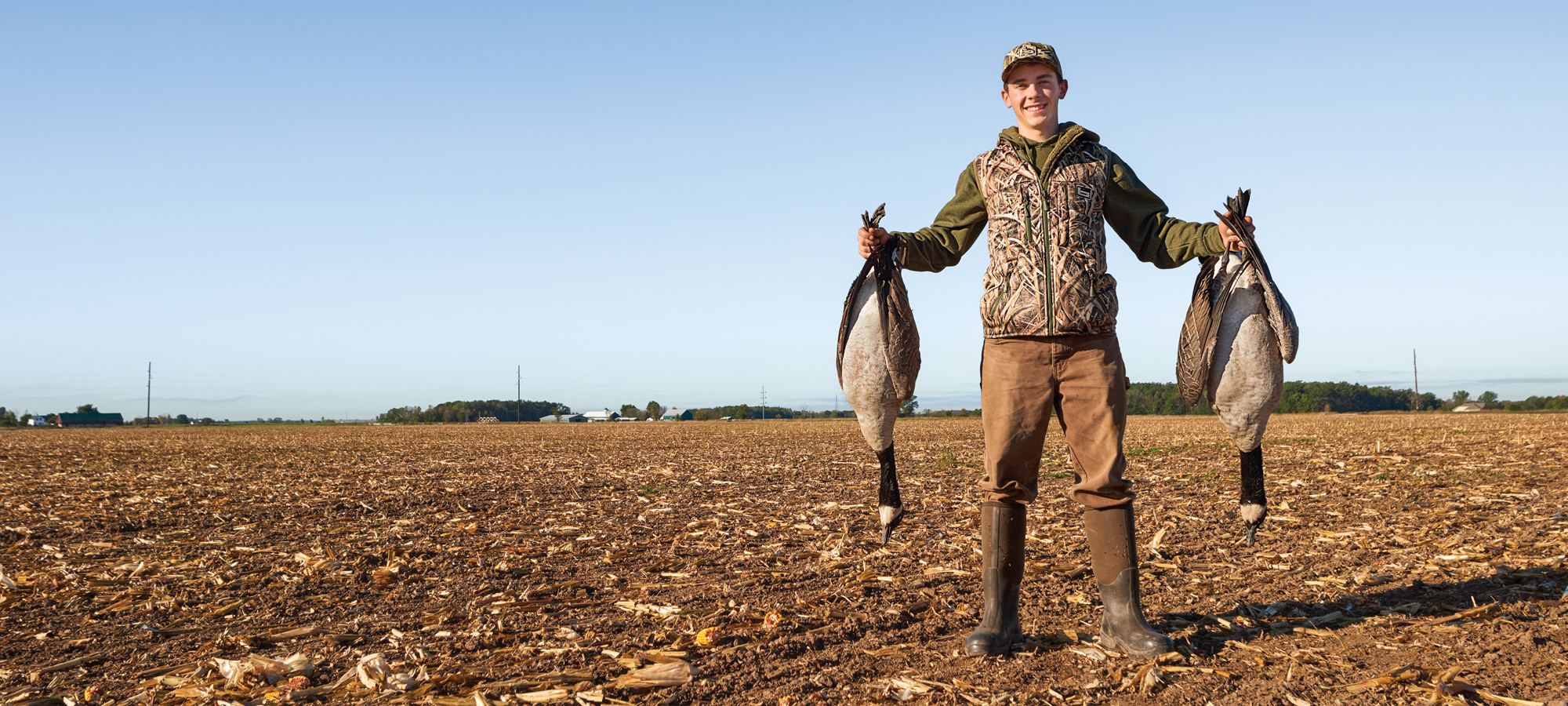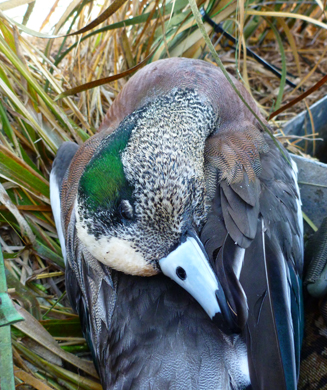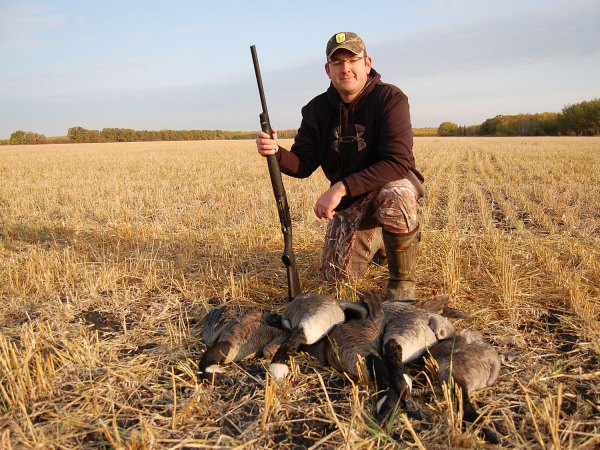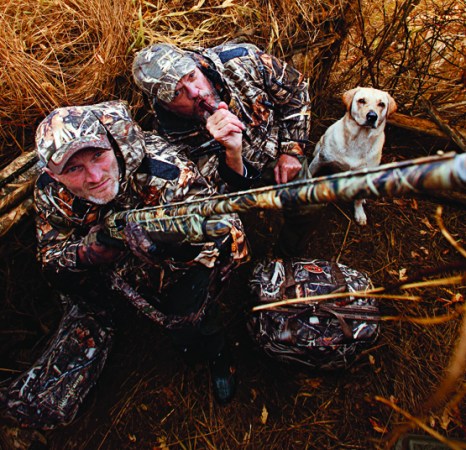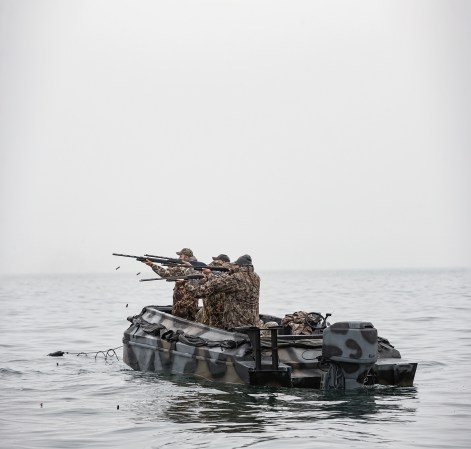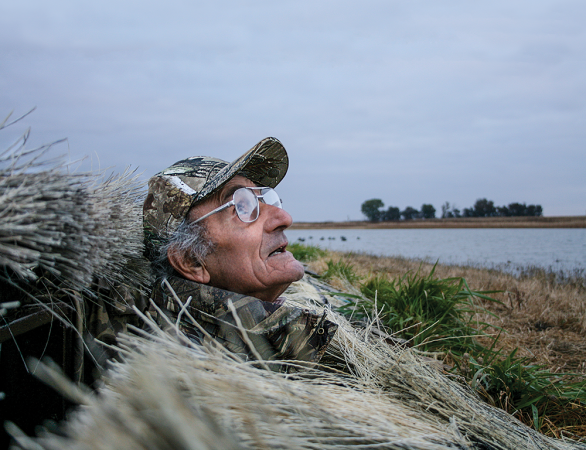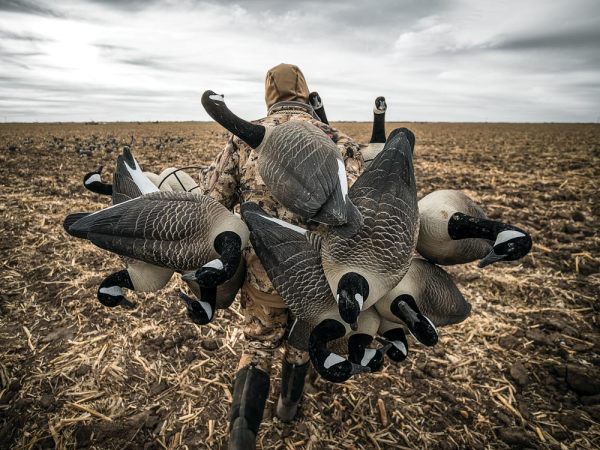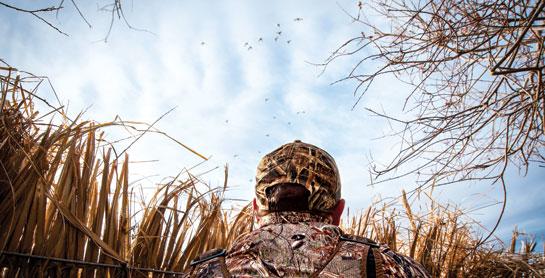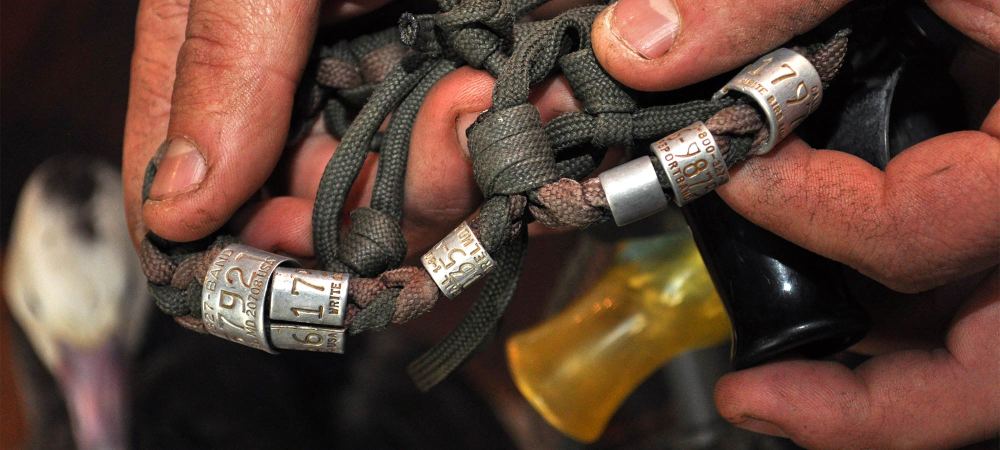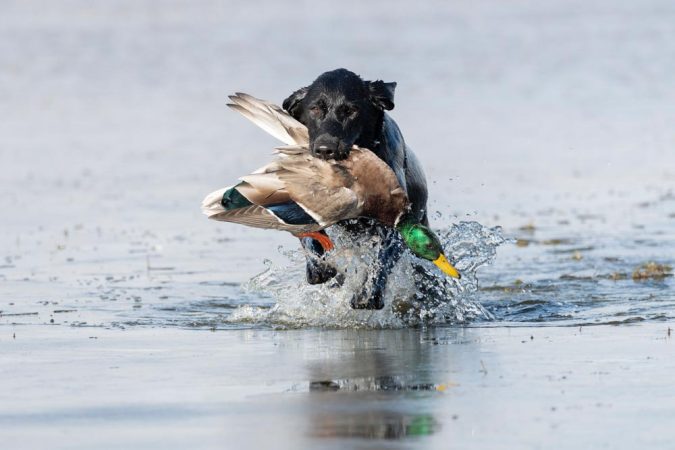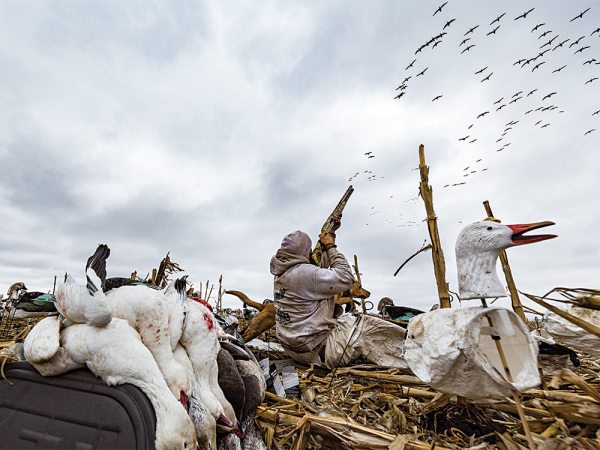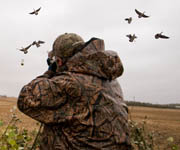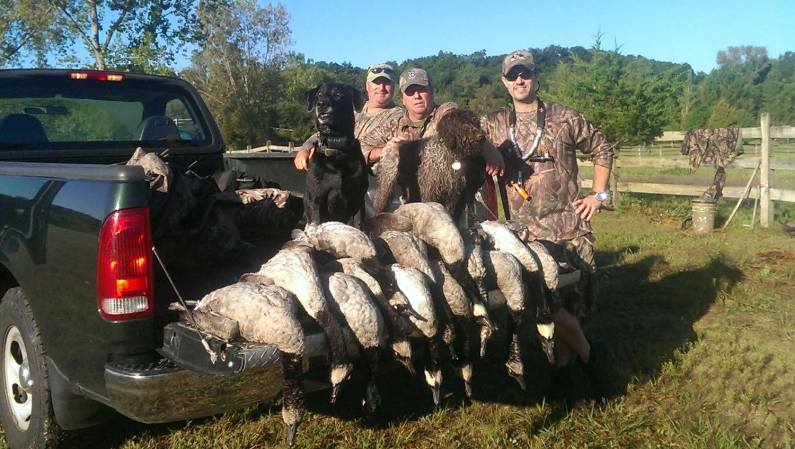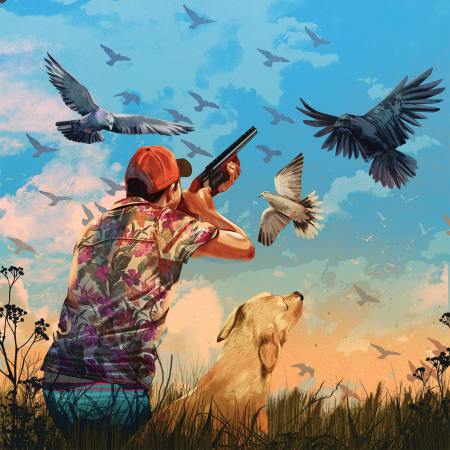The 11 layout blinds are brushed in, a trailer load of full-body decoys is set, and flocks of Canada geese are starting to work across the horizon just as the sun colors up the Midwest farm country in perfect golden-hour light. Tyler Huettenrauch, a 20-year-old mechanical engineering student, is on the far-left end of our shooting line and starts calling out birds. “Geese to the left…six out front…watch that pair.” His voice is calm, almost flat, even as multiple flocks of geese swing closer to our spread. Meanwhile, on the right side of the shooting line, Huettenrauch’s buddy Cody Schmidt, 21, is working us into a fever pitch. About 300 yards off, a flock of 20 geese drops lower, maple-leafing to cut altitude, and then makes a slow circle around our spread. Schmidt, Huettenrauch, and their crew of friends have been hunting this area outside of Greenleaf, Wis., since they were little kids with their dads, and then on through high school—they used to race the bus to school after weekday-morning hunts. And even though they’re older now, the enthusiasm is still there.
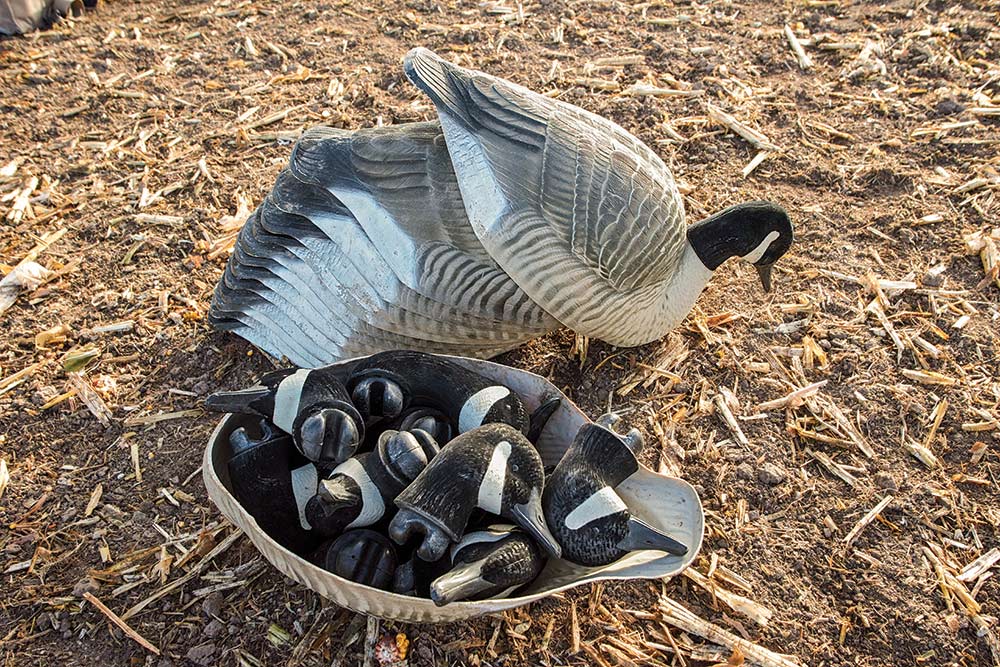
“It’s going to get nastyyyy,” Schmidt says excitedly, drawing out the “y” in a high-pitched falsetto as the geese fly to the edge of shotgun range. But the flock of 20 never commits and slides off instead. From behind, a pair of geese buzz the tower, and one shooter jumps the call to rush a shot as the geese fly straight away from us. The first shot is followed by a dozen more, and we manage to drop one of the pair. A few minutes later, a three-pack does the exact same thing, and more shots ring out before the “take ’em” call is ever given. Now Schmidt gets the ranks in order.
“Nobody shoots until the call is made. We want the geese to finish so everybody gets a shot, and we drop as many as possible,” he says, half commanding, half pleading. The crew got permission to hunt this field that held a few hundred geese yesterday. There are 11 hunters in the group, and we had all spent hours before sunrise setting decoys and brushing in blinds. We’re on the X. We’ve come too far to blow it now.
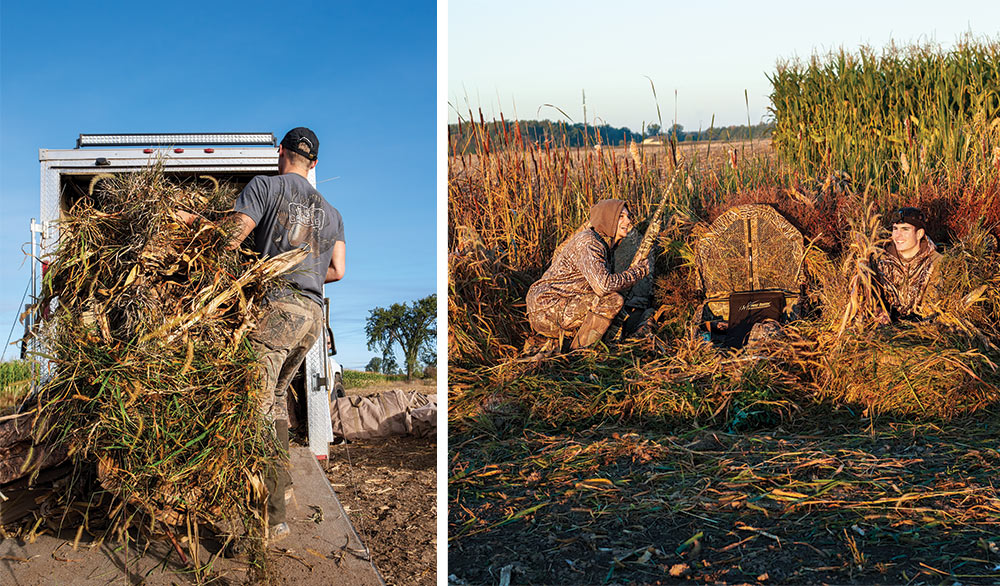
Soon enough, geese start piling into the spread, coaxed in by a trio of callers all working off each other to mimic a flock of feeding honkers. We get pairs and singles, and then a few larger flocks of birds, all cupped up and coasting down into the decoys. They keep coming and we keep shooting. The next 30 minutes is controlled chaos. Someone spots geese. Frenzied calling on short-reeds ensues. “Take ’em!” A barrage of gunfire. Hooting and hollering. Run out to grab the geese. Reload. Repeat.
We kill our 11-man limit of 22 geese by 7:30 a.m.—just in time for Huettenrauch’s younger sister, Elizabeth, to make it to work at her part-time waitressing job at the golf course. The crew has killed 197 geese this year (one of the guys keeps track on his phone), and the season is still young. The very last bird is banded, and, of course, Schmidt is the one who killed it. The guys hunt together every weekend through the entire season and usually sneak in one hunt during the week. There’s no real leader in this group of seven young waterfowlers (who range in age from 18 to 24), but Schmidt is by far the most excitable. He doesn’t try to play it cool like the others. He’s shameless, like a guy who’s a little too into his new girlfriend.
“He’ll work all day, then go scouting in the evening, then wake up at 3 a.m. to hunt the next day. He just doesn’t sleep before a hunt,” says Huettenrauch, who’s been friends with Schmidt since high school.
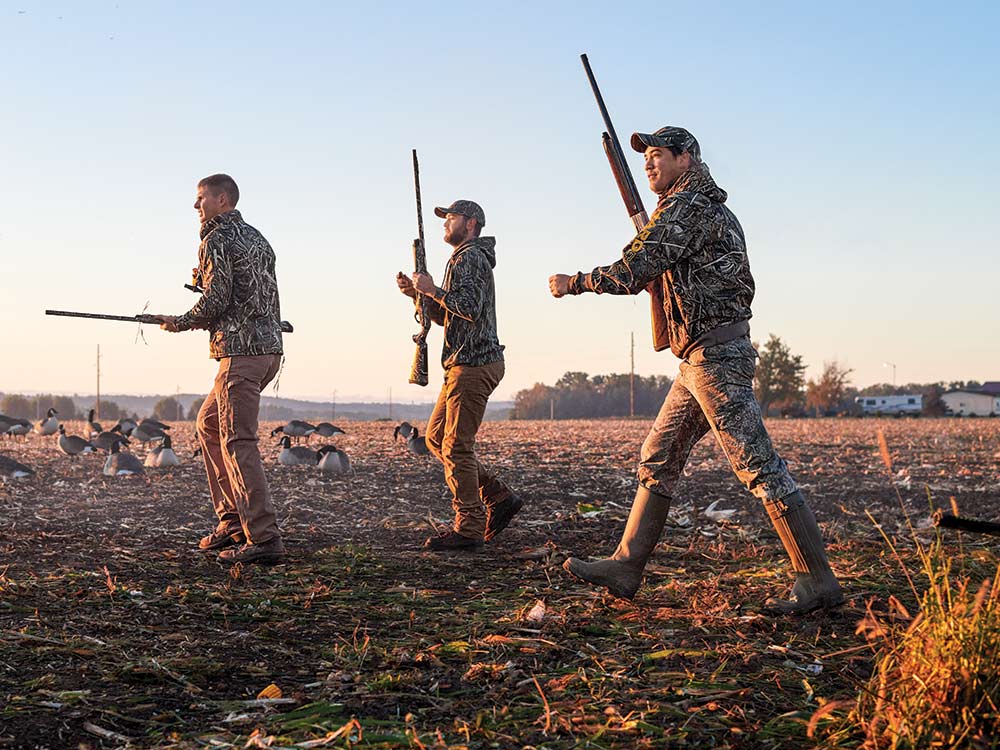
Besides the regular young guns, there are four outsiders along for the ride: me, Roland Schmidt (no relation to Cody) and his 12-year-old son, Hunter, plus their friend Terry. Roland and Terry are middle-aged, but Roland is fairly new to hunting. He’s never been on a big, successful shoot like this before.
“We’ve never limited out like that,” he says as we’re picking up the spread. “These guys know what they’re doing.”
Turning the Tide
If you go by the numbers, waterfowl hunting is in a slow death spiral. Last spring, Delta Waterfowl published a special report titled “Looming Crisis” that detailed the decline in waterfowl hunting participation, the likely reasons for the decline, and the potential repercussions of losing hunters.
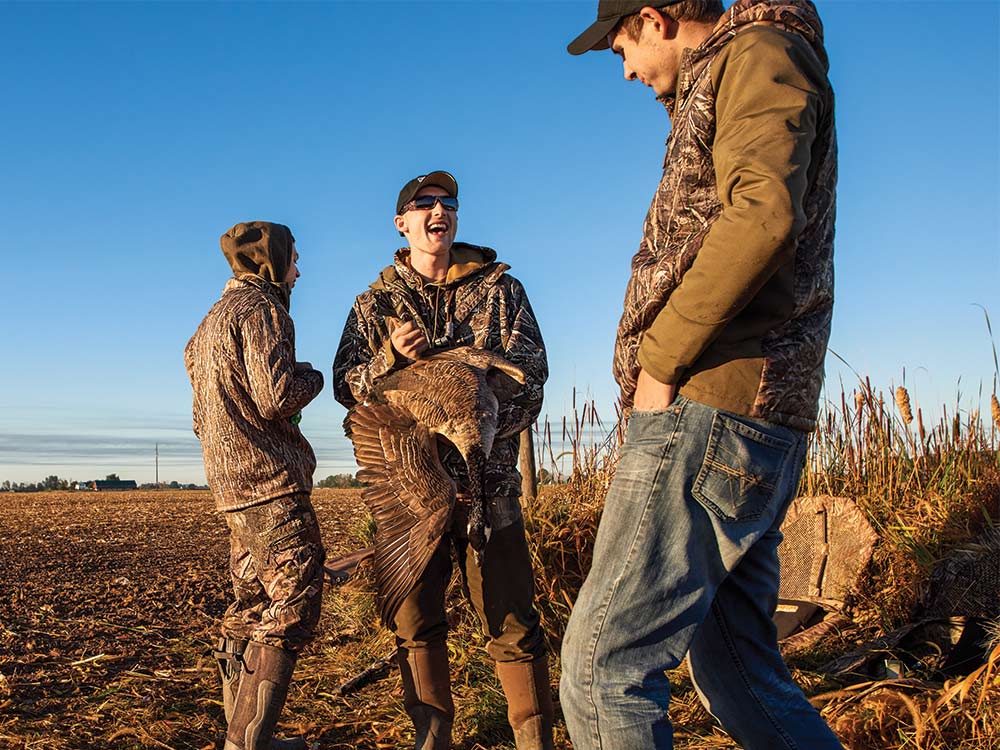
Here’s the gist of that report: The number of waterfowl hunters in the U.S. has decreased by more than 50 percent since 1970 (from 2.03 million to 998,600 in 2015). This despite the fact that duck populations hit a record high in 2015. The decline can be attributed to a lack of hunting opportunity and access to quality places to hunt—even though there are fewer hunters, there’s still plenty of competition and pressure in public marshes and fields. The fallout means a decline in license sales and duck stamps, and potentially even more lost habitat and access.
The report also found that about a third of the duck hunting population doesn’t buy a license every year—some years they hunt, some years they don’t—and no one is quite sure why. Encouraging these fair-weather hunters to be more committed and more aggressively recruiting new hunters will be the only ways to ensure waterfowl hunting’s survival.
And it’s going to be up to the next generation of young diehards like Huettenrauch, Schmidt, and their buddies to save the sport—even if they’re not fully aware of that yet. Will they be able to succeed where the generation of waterfowlers before them failed?
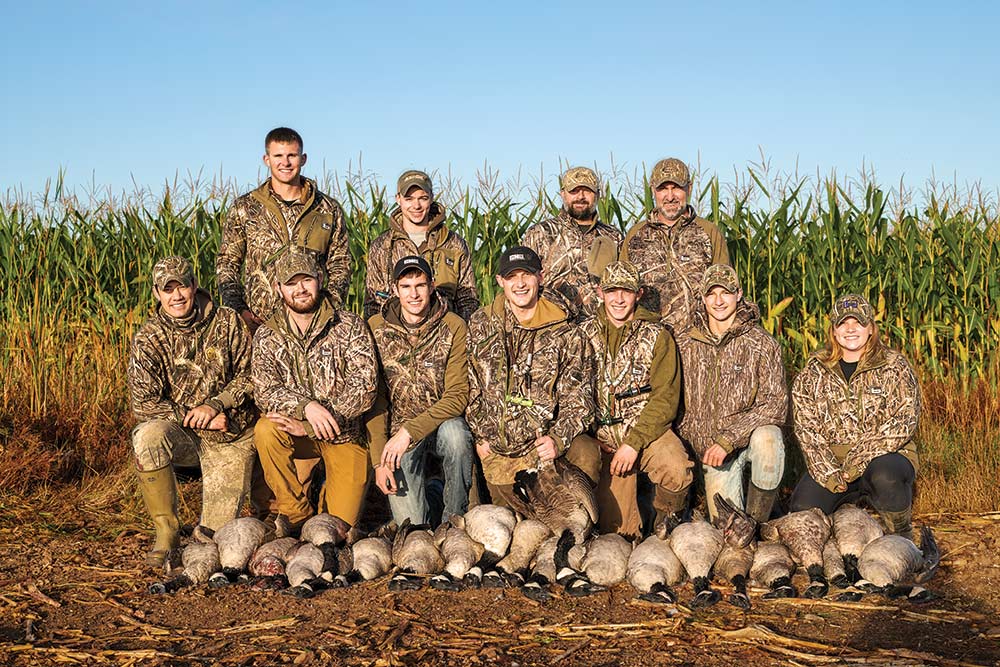
“They’re about [killing big numbers of birds] now,” Pete Huettenrauch, Tyler’s dad, tells me one night over beers. “But that’s okay. I was about numbers, too, when I was young. They will grow out of that.” What Pete is hinting at is that the boys’ unbridled passion for the hunt will soon mature into a desire to bring newcomers in. There are already slivers of hope.
Pete runs volunteer mentoring programs for brand-new hunters who want to learn how to hunt turkeys and pheasants. Tyler is one of the mentors in these programs, and Tyler and his dad hope to start a waterfowl mentoring program, too. Huettenrauch is also an Avery and Banded pro-staffer and is a youth fieldstaff manager. He works to recruit young waterfowlers and provide them with hunting opportunities, connections, and Avery/Banded gear.
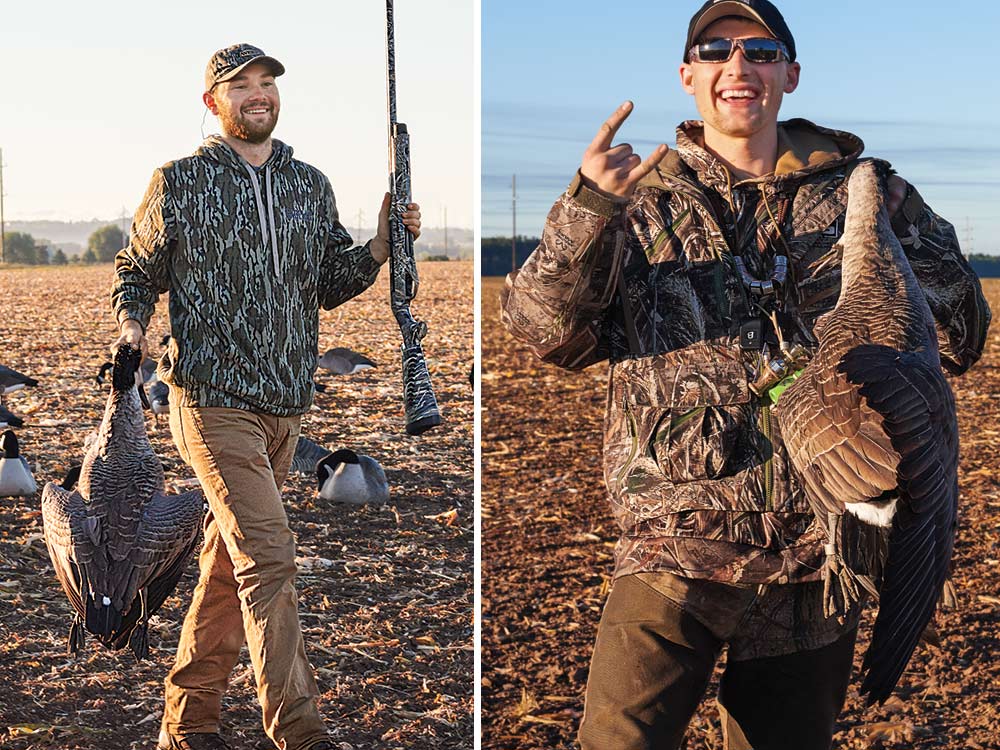
For his part, Schmidt will take anyone hunting who is willing to help scout, wake up early to set a big spread, and then pack it up when the hunt is over. He doesn’t have that cutthroat, territorial attitude that hardcore waterfowlers in decades past always seemed to adopt.
Schmidt and Huettenrauch’s group used to compete for fields with another group of young goose hunters from a nearby town, but now they’ve combined forces and work together to scout, and they sometimes hunt together when one group needs more guys. It’s a small step toward more hunting opportunity for everyone.
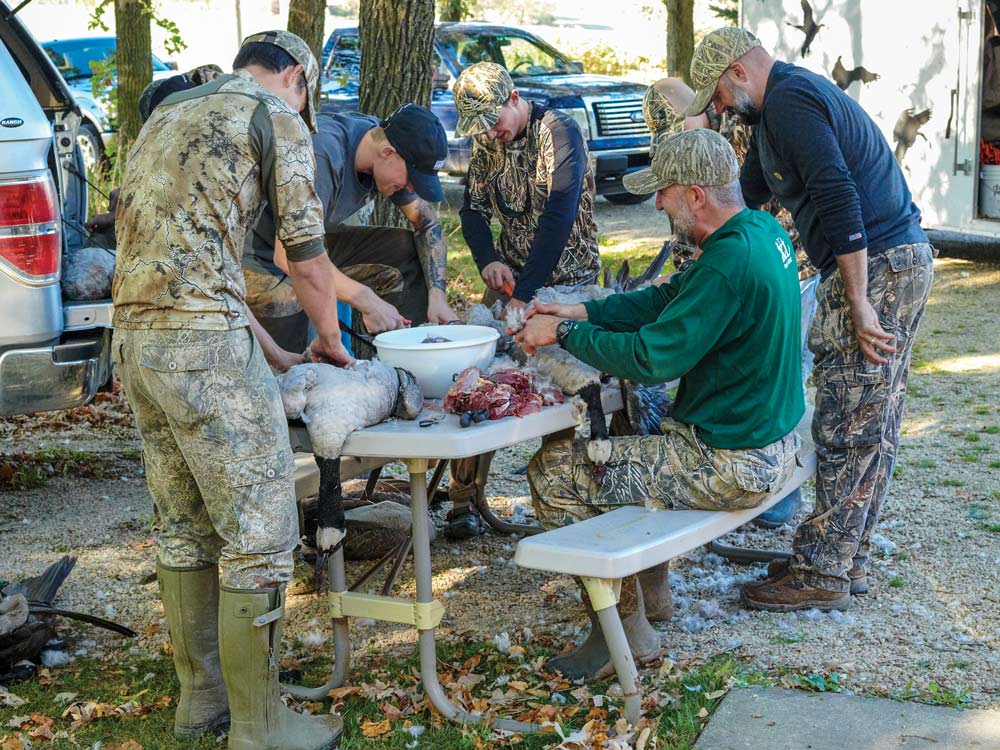
New Birds
After we clean our geese and eat breakfast (Huettenrauch’s mom makes us all pancakes), most of the guys go out bowhunting for the evening. But Huettenrauch, his girlfriend Carley, Schmidt, Elizabeth, and I drive around to look for more geese for the next day’s hunt.
We meander backroads in Huettenrauch’s truck while Schmidt and Elizabeth scout farm fields to the west. Eventually we follow a flock of geese to a cut cornfield surrounded by woods on three sides. We watch as the birds pack into the field, and soon there are at least 350 on the ground.
Read Next:
Why We Suck at Recruiting New Hunters, Why It Matters, and How You Can Fix It
We pull up to a quaint farmhouse with a single light on in the kitchen. Huettenrauch taps on the door and ultra-politely asks the landowner (a stern-looking gray-haired lady) for permission to hunt the property the next morning as a dozen geese hook over the porch and drop into the field. Incredibly, we get the green light.
Even the mild-mannered Huettenrauch is giddy and texts Schmidt a video of the field loaded with geese. “You can stop scouting now,” Huettenrauch messages him.
Tomorrow, the boys will be back at it.

